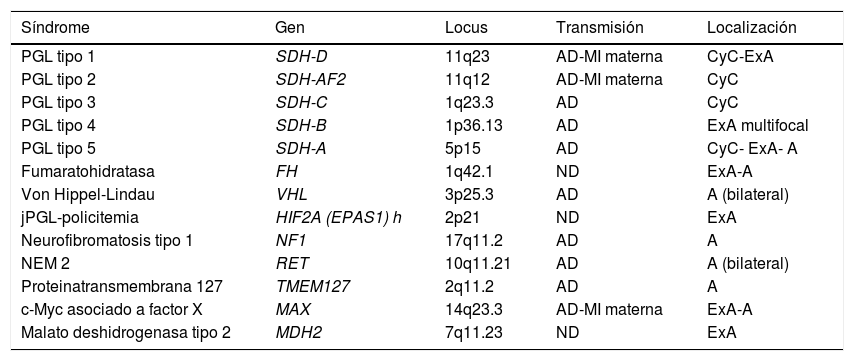Los feocromocitomas y paragangliomas son tumores neuroendócrinos poco frecuentes y con alta morbimortalidad. Reconocer las distintas formas de presentación es el paso diagnóstico inicial. El estudio bioquímico permite determinar el exceso de catecolaminas y sus metabolitos. Sin embargo, las determinaciones disponibles ofrecen diferente precisión diagnóstica. La tomografía computada y la resonancia magnética permiten localizar estos tumores con una alta sensibilidad. Los estudios funcionales se reservan para sospecha de enfermedad metastásica y para tumores múltiples. Un tercio de los pacientes presenta una mutación genética germinal y varios genes están implicados en el desarrollo de estos tumores.
Pheochromocytomas and paragangliomas are rare neuroendocrine tumours associated with high morbidity and mortality. Recognizing the clinical presentation is the first step for diagnosis. Biochemical studies may determine an excess of catecholamines and their metabolites. However, the available tests offer varying diagnosis precision. Computed tomography and magnetic resonance are highly sensitive for locating these tumours. Functional tests are reserved for when metastatic and multifocal disease are suspected. One third of the patients have a germline mutation and many genes are involved in the development of these tumours.












